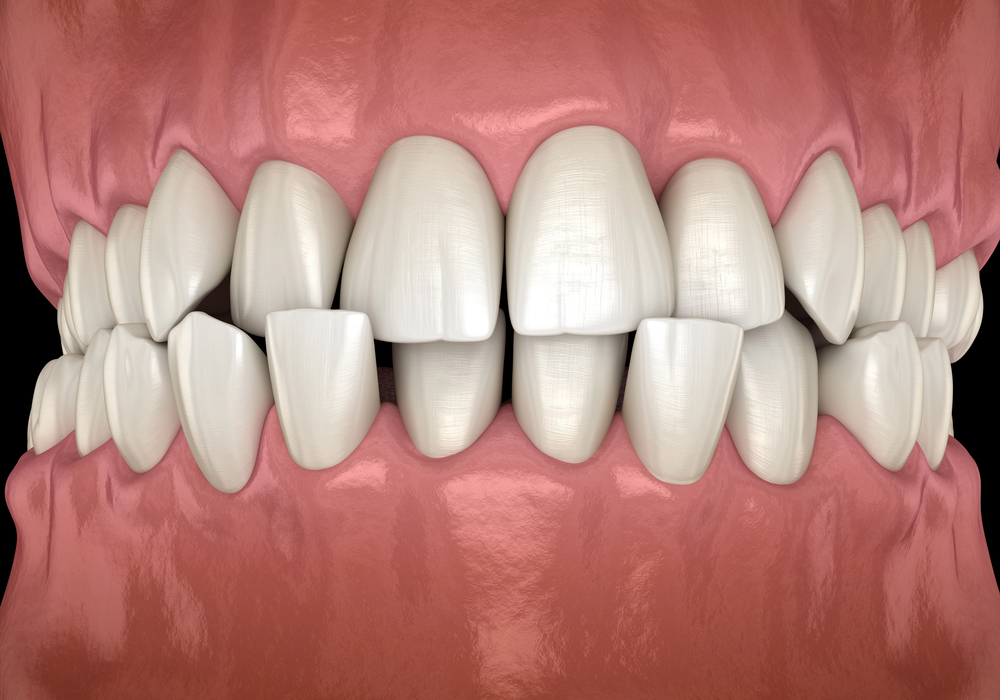Crossbite issues don’t just stop at appearance. They affect comfort, can lead to uneven wear on teeth, and sometimes contribute to jaw pain and alignment issues. These aren’t just surface-level concerns; they impact how people experience day-to-day life.
This guide unpacks what it typically costs to correct a crossbite, from treatment choices to factors that influence expenses, so you have a clear understanding of what’s involved financially. Our aim? To make navigating crossbite treatment as clear and stress-free as possible.
Considering your own options? Consulting with a registered orthodontist gives you the opportunity to explore solutions that work best for your circumstances.
Why Crossbite Treatment Is Important
Long-Term Health Benefits
An untreated crossbite can have serious implications for oral and overall health. Over time, a crossbite can lead to jaw discomfort, TMJ disorders, uneven tooth wear, and even difficulty chewing. When left untreated, these issues compound, leading to potential long-term damage that could make treatment more complex down the road. Addressing a crossbite early on ensures better function, fewer future issues, and healthier teeth and jaw alignment for years to come.
For those working physically demanding jobs, the physical demands of daily work can make the effects of alignment issues even more noticeable, increasing discomfort and reducing overall stamina.
Cost Implications of Delaying Treatment
Delaying crossbite treatment can create cost-heavy complications. If a crossbite progresses unchecked, it can escalate into issues requiring more invasive solutions, like complex surgeries or additional orthodontic procedures, all of which add to the expense. Taking action early can save significant costs, turning a manageable issue into a proactive investment rather than an emergency correction later on.
Improved Quality of Life
Correcting a crossbite not only enhances oral health but can also improve quality of life. A well-aligned bite supports easier chewing, reduces strain on teeth and gums, and even boosts self-confidence by enhancing one’s smile. For many, treating a crossbite is an investment in both health and well-being, helping individuals feel and function at their best.
Overview of Crossbite Treatment Options and Their Costs
Braces (Traditional and Ceramic)
- Cost Range: Braces in New Zealand typically range from $4,000 to $9,000.
- Pros and Cons: Braces remain one of the most effective options for correcting crossbites, especially in complex cases. Traditional metal braces are durable and effective but can be noticeable, whereas ceramic braces offer a more discreet option, though they may require extra care. Both options deliver reliable results for even the toughest alignment issues.
Clear Aligners (e.g., Invisalign)
- Cost Range: Clear aligners usually range between $5,000 and $9,500.
- Pros and Cons: Clear aligners have revolutionised orthodontic care by providing a nearly invisible, comfortable option that fits well with most lifestyles. They’re particularly suited to mild to moderate crossbite cases and allow wearers the convenience of removal for eating and brushing. However, they may not be ideal for more complex or severe crossbite corrections.
Surgical Options (for Severe Cases)
- Cost Range: For severe cases that require surgical intervention, costs can vary widely, typically ranging from $10,000 to $30,000 based on complexity and hospital fees.
- When Surgery Is Necessary: Surgery is generally reserved for crossbites that cannot be effectively corrected with braces or aligners. In these cases, surgery can realign the jaw, creating a stable foundation for a balanced bite and function. This approach is often the last resort, yet it provides a transformative solution for patients with more significant bite and jaw misalignments.
Factors Influencing the Cost of Crossbite Treatment
Severity of the Crossbite
The complexity of a crossbite can mean the difference between a short-term fix and a more intensive, long-term treatment. More severe cases don’t just take longer—they also demand more frequent adjustments, which can drive up the cost.
Type of Treatment Chosen
Braces, aligners, surgery—each treatment option has its price point. Traditional braces, clear aligners like Invisalign, and surgical interventions all have different levels of precision and customisation, which impacts the final bill. Advanced or personalised treatments, while effective, naturally come with a higher price tag.
Orthodontist’s Expertise and Location
The saying “you get what you pay for” often applies to orthodontic care. An orthodontist with a strong reputation or specialised expertise may charge more, and location can also play a role—urban centres in New Zealand may come with higher fees compared to smaller regions.
Treatment Duration
The longer the treatment timeline, the more it can add up. More adjustments, more appointments, more costs. A shorter timeline typically means a lower cost overall, but longer treatment is sometimes unavoidable, especially with complex crossbites.
ALSO READ: At-Home Teeth Aligners in Auckland: An Instructive Tradie’s Guide
Additional Costs to Consider
Initial Consultation and X-rays
Starting treatment typically means a consultation and a set of X-rays, which can run anywhere from $150 to $300 in New Zealand. Some clinics offer package deals, where these initial costs roll into the overall treatment plan, but it’s worth checking what’s included upfront.
Retainers Post-Treatment
Once the crossbite is corrected, retainers are essential to keep everything in place. Prices for retainers range from $200 to $600 depending on type—an investment in making sure that results last.
Follow-Up Appointments and Adjustments
Complex cases, especially ones that span longer timeframes, might require additional visits. Each extra appointment means additional costs, so it’s worth factoring in any potential follow-up fees when budgeting for treatment.
Insurance and Financial Assistance
Coverage for Crossbite Treatment
Private health insurance in New Zealand doesn’t always extend to orthodontic treatments, but some policies offer limited coverage. It’s critical to comb through the details—some plans cover braces or clear aligners, while others focus on broader dental needs. Knowing the specifics can help avoid surprises down the line.
Payment Plans and Financing Options
Many orthodontic practices understand that affordability matters, especially with longer treatments like crossbite correction. Monthly payment plans make treatment costs more manageable and are often structured to be low-interest or even interest-free. This approach allows families to access the care they need without overwhelming upfront costs.
Discounts for Upfront Payments
For those ready to commit, paying the full treatment cost upfront may unlock a discount. Clinics often appreciate the simplicity of upfront payments and pass along savings as a thank you. It’s a savvy option for families who are budget-ready.
Public Health Assistance or Community Initiatives
While orthodontic treatment isn’t commonly covered by New Zealand’s public health system, some community programs may offer assistance, especially for children with more severe dental alignment issues. Checking with local health authorities or social services can open doors to additional support options.
Cost vs. Long-Term Benefits of Treating a Crossbite
Health Benefits
Treating a crossbite is about more than aesthetics; it’s a direct investment in oral health. Proper alignment reduces gum strain, preserves enamel, and minimises the risk of developing TMJ disorders. In the long run, this can mean fewer dental visits, lower dental bills, and overall peace of mind.
Aesthetic and Confidence Boost
A corrected crossbite often enhances facial symmetry, giving patients a boost in confidence that radiates outward. For kids and adults alike, a balanced smile contributes to positive self-image and can make social interactions more comfortable and enjoyable.
Overall Value of Early Intervention
Early treatment is often less invasive and more cost-effective. Correcting a crossbite sooner can prevent the need for complex interventions later in life, reducing both financial and physical strain. Investing in early correction pays dividends, offering lasting health and confidence benefits.
Frequently Asked Questions
Can crossbite treatment be covered by insurance in New Zealand?
In New Zealand, private health insurance sometimes covers orthodontic treatment, but it varies by plan. It’s worth reviewing your policy or speaking directly with your provider to understand any potential coverage for crossbite treatment. For children with more serious cases, some community assistance programs might also offer support.
How long does crossbite treatment usually take?
The timeline for crossbite treatment often depends on the complexity of each case and the type of treatment chosen. Braces or clear aligners typically require anywhere from 12 to 36 months. Severe cases requiring surgical intervention may take longer, especially with pre- and post-operative phases included.
Is surgery always required to fix a crossbite?
Surgery is typically reserved for more severe crossbites that can’t be corrected with braces or aligners alone. Most crossbites, particularly in younger patients, can be effectively treated without surgery through orthodontic appliances or clear aligners.
Are there affordable options for adults needing crossbite treatment?
Absolutely. Many clinics offer flexible payment plans and interest-free financing options that make crossbite treatment more accessible. Adults can choose from braces or aligners tailored to their needs, with options to suit different budgets and treatment goals.
What are the payment plans available for orthodontic treatment in New Zealand?
Orthodontists across New Zealand often provide structured payment plans, allowing patients to pay monthly over the course of treatment. These plans are usually designed to be interest-free, helping families manage costs comfortably over time. Checking with your orthodontist for their specific options is a great first step.
Final Thoughts
Crossbite treatment costs vary based on factors like severity, treatment type, and location. Early intervention often proves to be the most cost-effective approach, preventing more extensive (and expensive) procedures down the line.
If you’re considering crossbite treatment for yourself or a loved one, a consultation with a registered orthodontist is a wise first step. Only a personalised assessment can give you a clear picture of both the treatment plan and associated costs.
Find a trusted orthodontist near you or explore an orthodontist directory to connect with qualified professionals who can help you on your treatment journey.


